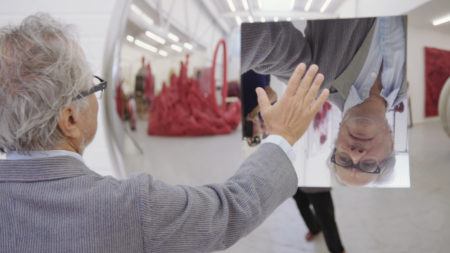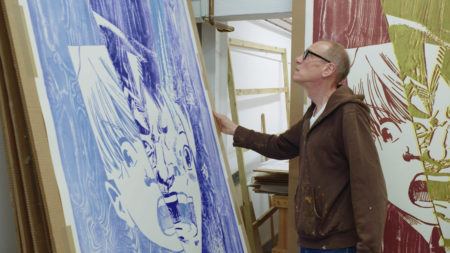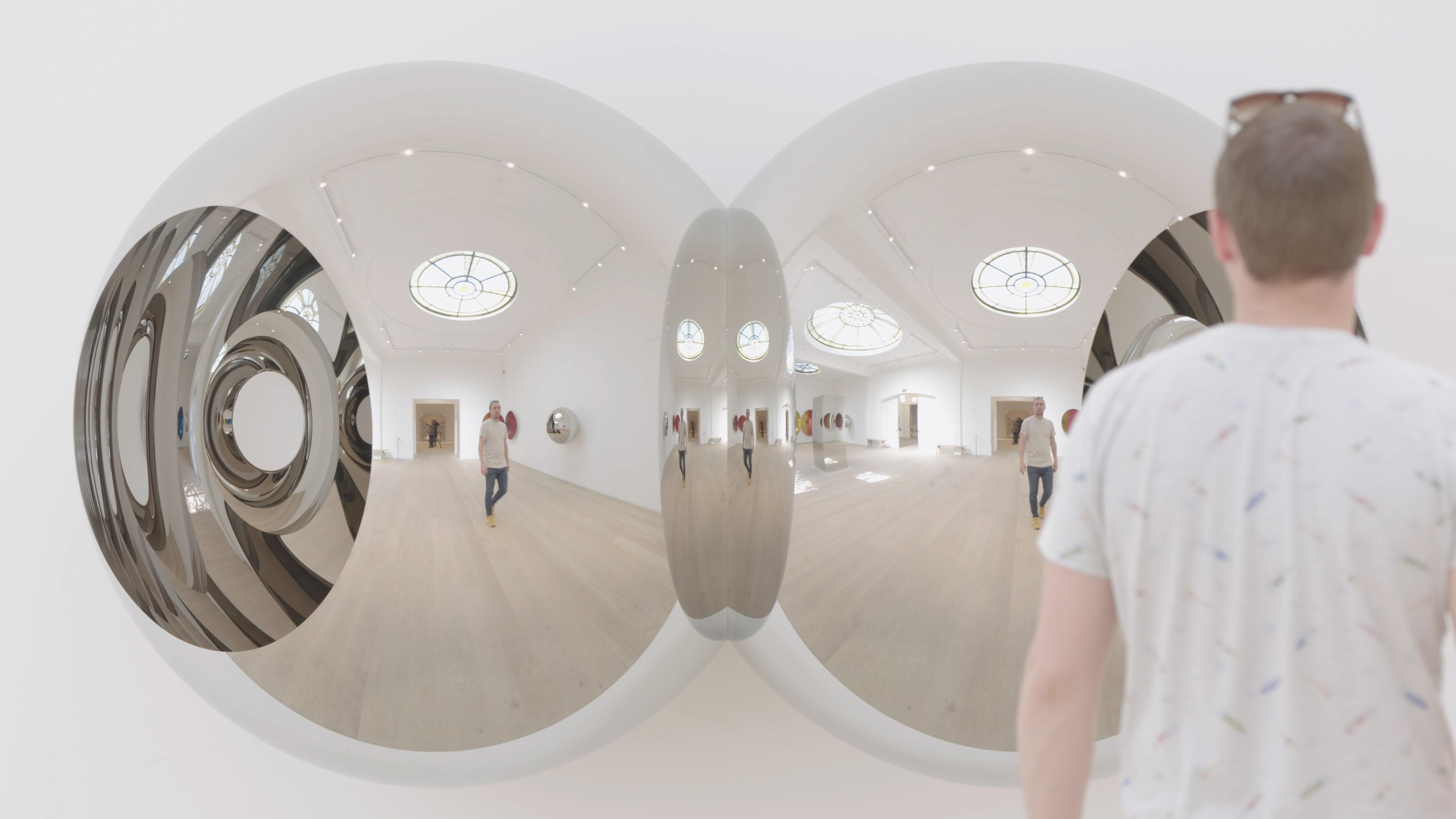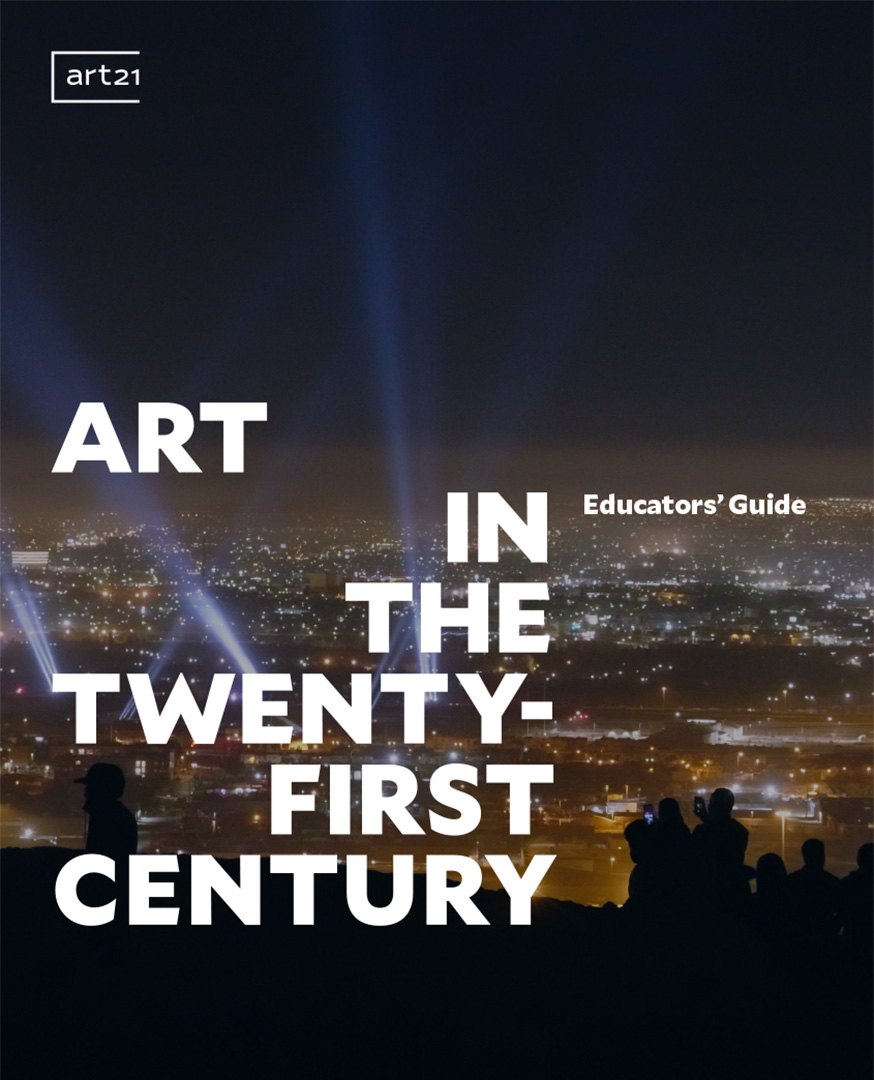Continue playing
(Time remaining: )
Play from beginning
Continue playing "{{ controller.videos[controller.getVideo(controller.currentVideo)].segmentParentTitle}}"
{{controller.videos[controller.getVideo(controller.currentVideo)].title}} has ended.
Phyllida Barlow in "London"
Since the late 1960s, the British-born artist Phyllida Barlow has experimented with non-traditional, modest materials like cement, fabric, plaster, plywood, and metal to create colossal sculptures and installations that occupy, challenge, and interrupt physical spaces. From her early memories of London’s war-ravaged East End to the unrelenting expansion and construction of the city in the twenty-first century, Barlow is inspired by the industrial urban landscape and its processes of damage and repair. Her enormous sculptural forms are stacked from floor to ceiling, giving the unnerving impression of being close to toppling over, and unexpectedly interspersed with vibrant colors. Their worn surfaces intentionally reveal the processes of their making, creating a thrillingly contradictory experience of physical threat and stability, of emotional alienation and connection. Shown drawing at her home studio and creating new, large-scale sculptures with her studio assistants, the artist is dedicated to pushing the formal and expressive power of her materials to create anti-authoritarian and anti-monumental objects. As Barlow puts it, “I’ve always been interested in the object that seems badly behaved.”
Credits
Executive Producer: Tina Kukielski. Series Producer: Nick Ravich. Director & Producer: Ian Forster. Editor: Morgan Riles. Director of Photography: Andrew Kemp.
Assistant Curator: Danielle Brock. Design & Animation: Momentist, Inc. Composer: Joel Pickard. Additional Art21 Staff: Lauren Barnett, Lolita Fierro, Joe Fusaro, Meghan Garven, Jonathan Munar, and Emma Nordin. Narration: Okema T. Moore.
Additional Photography: Jarred Alterman, Joshua Bagnall, Bryan Chang, Matt Conway, Pau García Laita, Christoph Lerch, Jonnie Lewis, John Marton, and Rafael Salazar Moreno. Assistant Camera: Santi Arcos, Alex Rozerot Kirkwood, Oliver Richardt, Charlie Stoddart, Matt Ward, Yifan Wen, and Ava Wiland. Location Sound: Simon Forrester, Tim Hodge, Sean Millar, Annie Needham, and James Page. Beijing Field Producer: Vicky Du. Production Assistants : Jonathan Batty, Adam Roberts, and Rialda Zukic.
Digital Intermediate: Cut + Measure. Post-Production Producer: Alex Laviola. Colorist: Chris Ramey. Post-Production Sound Services: Konsonant Post. Re-Recording Mixer & Sound Editor: Gisela Fullà-Silvestre. Online & Conform: David Gauff. Additional Animation: Andy Cahill. Assistant Editors: Jasmine Cannon, Jonah Greenstein, and Mengchen Zhang. Descriptive Video Information: Captionmax. Public Relations: Cultural Counsel.
Station Relations: De Shields Associates, Inc. Legal Counsel: Barbara T. Hoffman, Esq.
Artwork Courtesy: John Akomfrah, Phyllida Barlow, © Anish Kapoor. DACS, London / ARS, NY 2020, Christian Marclay, Black Audio Film Collective, Hauser & Wirth, Lisson Gallery, Paula Cooper Gallery, Smoking Dogs Films, and White Cube. Additional Music: “Craft” & “Pandora’s Box” by Christian Marclay; Atavistic Records.
Interns: Shane Daly, Grace Doyle, Eda Li, Daniela Mayer, Jason Mendoza, Nikhil Oza, Anika Rahman, Ana Sanz, Sara Schwartz, Victoria Xu, and Sadie Yanckello.
Archival Materials: BlackBoxGuild; Teri Bloom; British Council; Jacob Burckhardt; © Paula Court; CriticalPast; Paul Crosby; Adrian Gaut; Alexander Gold; Andy Haslam; Intermezzo FIlms / Luc Peter; Pierce Jackson; Lucerne Festival; Museu d’Art Contemporani de Barcelona; Pond5; SandenWolff, Courtesy Public Art Fund, NY; Jared Schiller; Snapchat; © Tate; © The Eva Hesse Estate; The Kitchen Archive, ca. 1971–1999; The Getty Research Institute; Whitechapel Gallery Archive; White Cube; © Whitney Museum of American Art, 2010.
Special Thanks: The Art21 Board of Trustees; Lucy Adams; Ashitey Akomfrah; Anthony Allen; Barlow studio assistants; Alison Burstein; CAFA Art Museum; Anna Cerdà i Callís; Clare Chapman; Coriander Studio; Cultureshock Media; Des Moines Art Center; Susan Doyon; Raena Franklin; Gibbs Farm; Emma Gifford-Mead; Elissa Goldstone; Nora Gomez-Strauss; Lina Gopaul; Melissa Saenz Gordon; Tim Griffin; Louise Hayward; Mackie Healy; Shelley Hirsch; Huddersfield Contemporary Music Festival; ICA Boston; Jupiter Artland; Kapoor studio assistants; Esther Knuth; Betsy Lack; David Lawson; Los Angeles County Museum of Art; Jon Lowe; Millennium Park, City of Chicago; Ministry of Tourism, Arts & Culture, Republic of Ghana; Tessa Morefield; David Moss; Capucine Perrot; Pitzhanger Manor & Gallery; Elizabeth Robert; Royal Academy of Arts; Dread Scott; Somerset House; Tate Britain; Venetia Tate; Times Square Arts; Sophie Treharne Nurse; Venice Biennale; Lucy Wilkinson; Nora Woodin; and Allison Wruble.
Major underwriting for Season 10 of Art in the Twenty-First Century is provided by PBS, National Endowment for the Arts, Lambent Foundation, The Anna-Maria and Stephen Kellen Foundation, The Andy Warhol Foundation for the Visual Arts, Toby Devan Lewis, The Horace W. Goldsmith Foundation, Henri Lambert, Nion McEvoy & Leslie Berriman, and Sakana Foundation.
Series Creators: Susan Dowling and Susan Sollins.
©2020 Art21, Inc.
Closed captionsAvailable in English, German, Romanian, Italian, Japanese, Korean, Chinese, Italian
Through the Art21 Translation Project, multilingual audiences from around the globe can contribute translations, making Art21 films more accessible worldwide. Translate this video now.
Interested in showing this film in an exhibition or public screening? To license this video please visit Licensing & Reproduction.
Phyllida Barlow was born in Newcastle upon Tyne, England, in 1944. Inspired by the urban environment, Barlow’s sculptures marry unconventional materials such as cardboard, plywood, plaster, and cement with vibrantly colored paint and fabrics. Her invented forms are created through layered processes of accumulation, removal, and juxtaposition—gestures that Barlow describes as “more functional than artistic.” The resulting massive works challenge viewers’ experiences of physical space, stretching the limits of mass, volume, and height as they tower, block, and interrupt space. Yet these works remain distinctly anti-monumental; the artist leaves exposed, unfinished seams, revealing the means of the works’ making and playing with the tensions between hardness and softness, the imperious and the comic, and the painterly and the sculptural.
More from "London"
Season 10 Educators' Guide
Educators’ Guides provide information about selected artists and themes, questions for classroom discussions, and hands-on activities that provide students with a fundamental understanding of creative and critical thinking processes.






